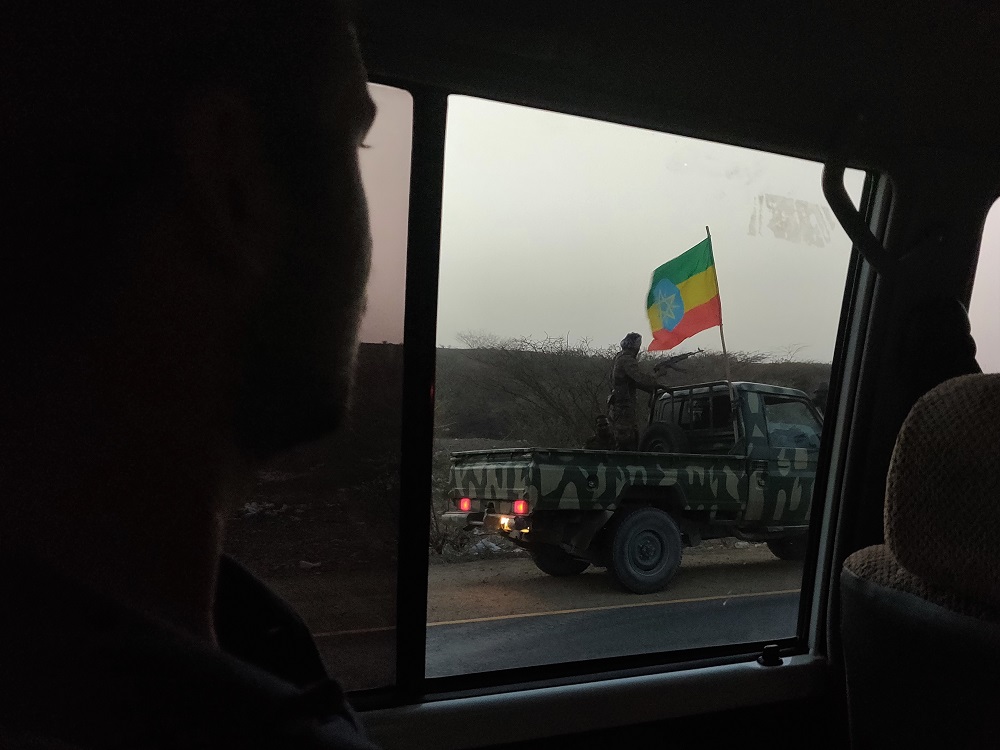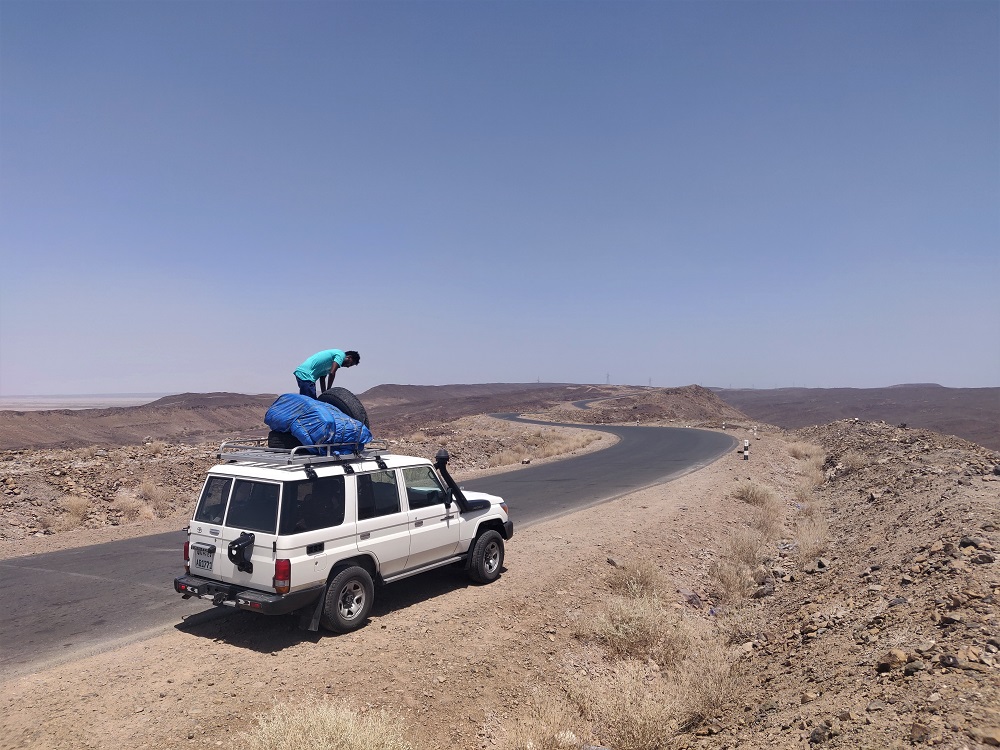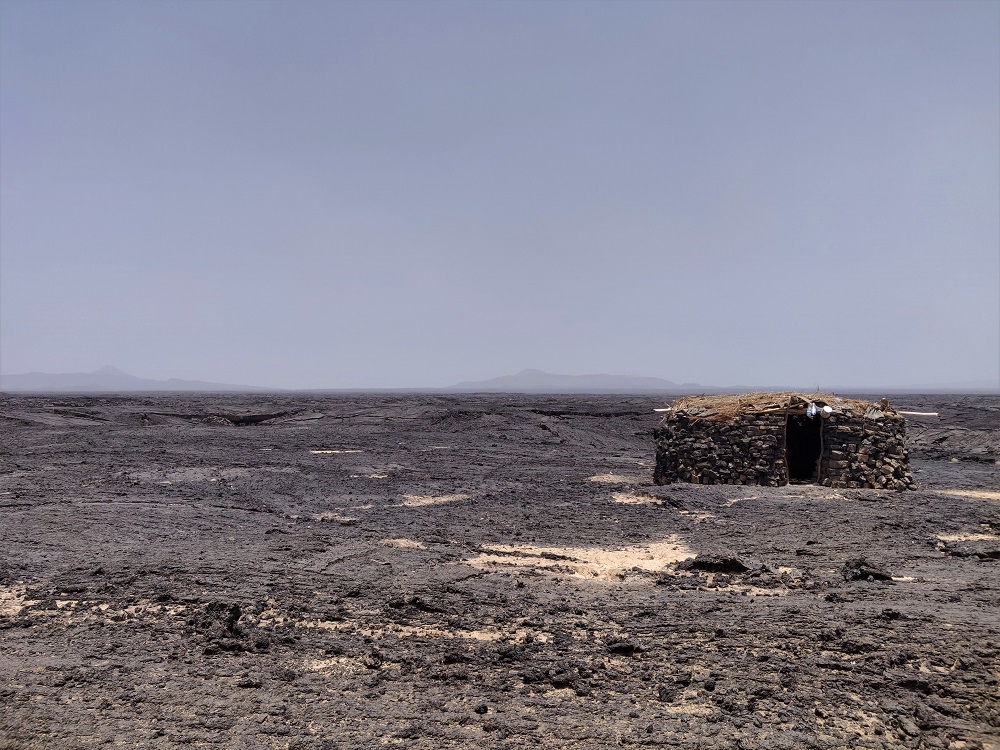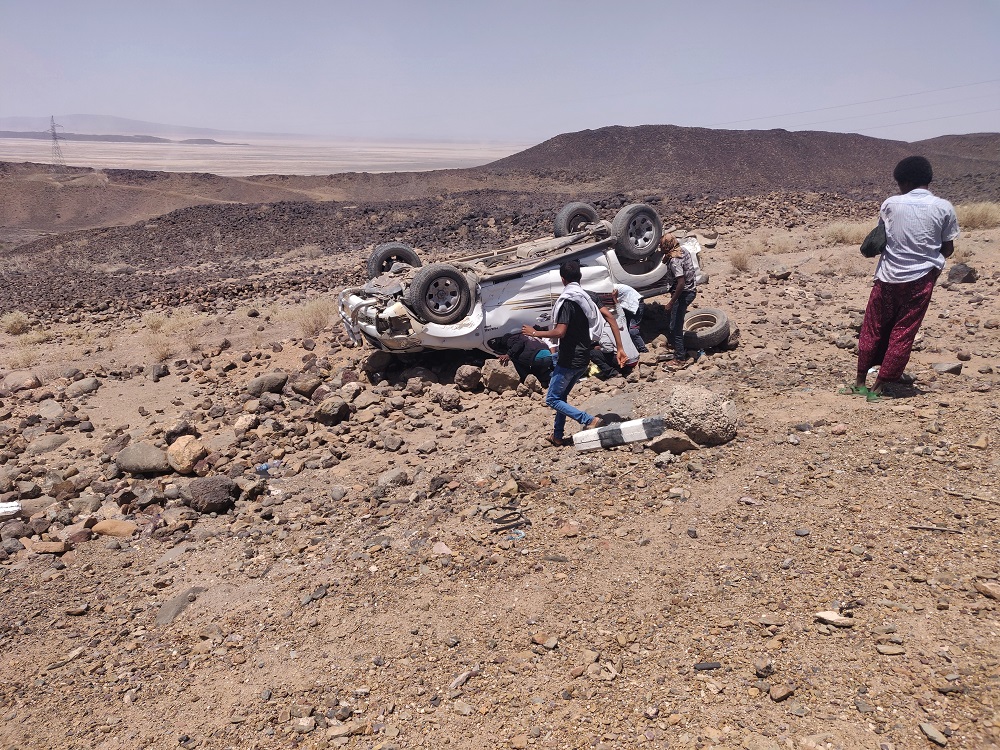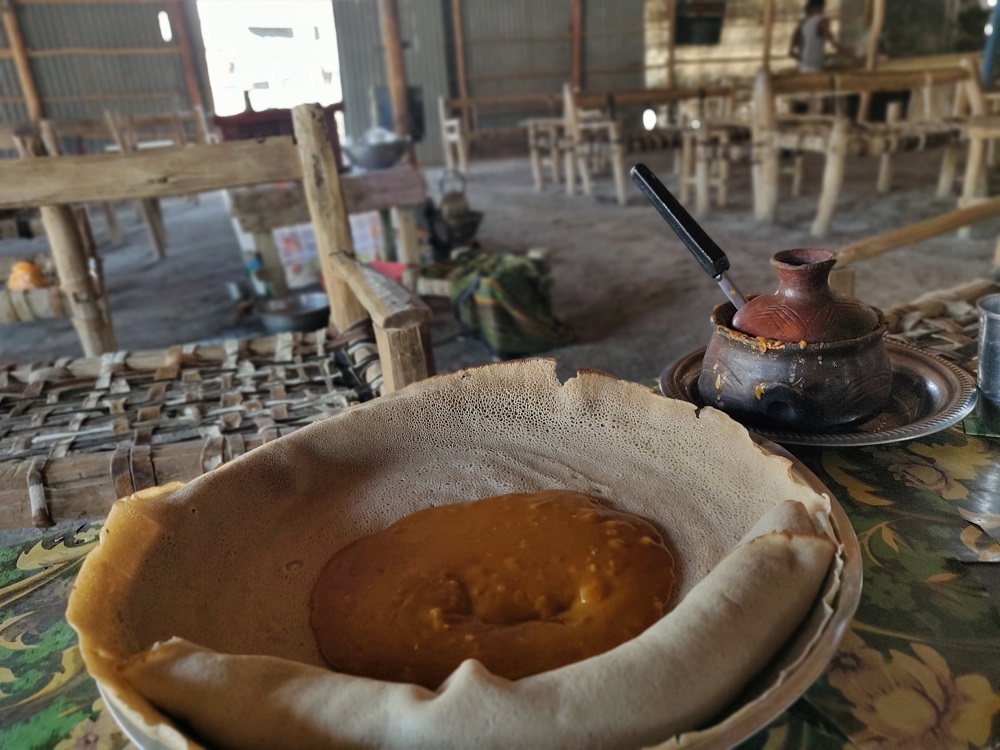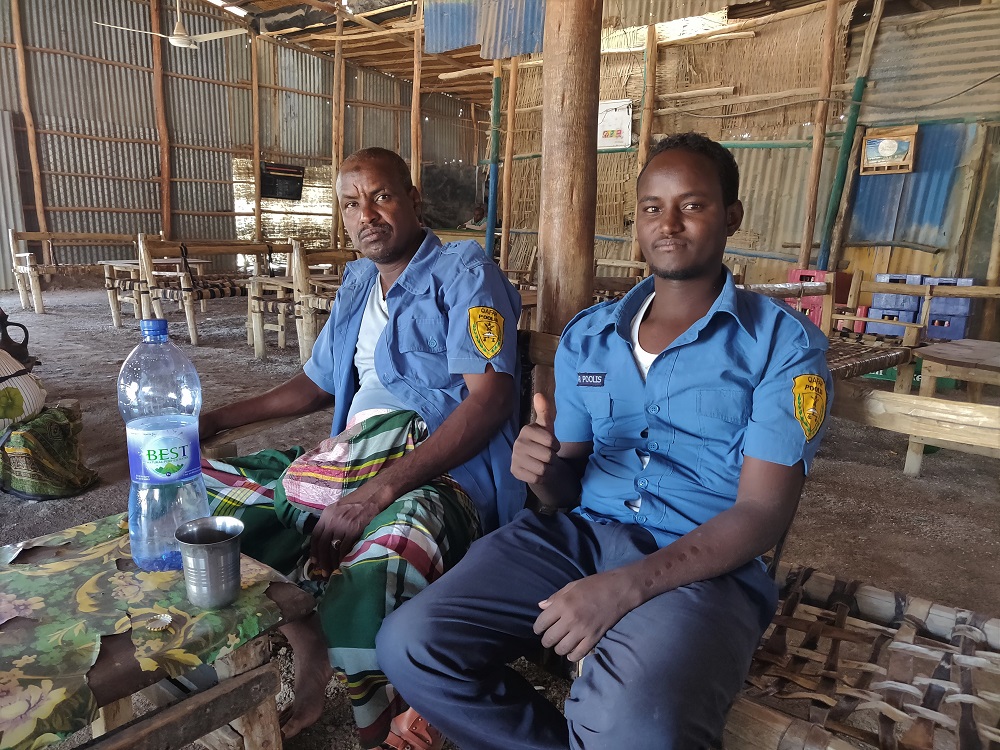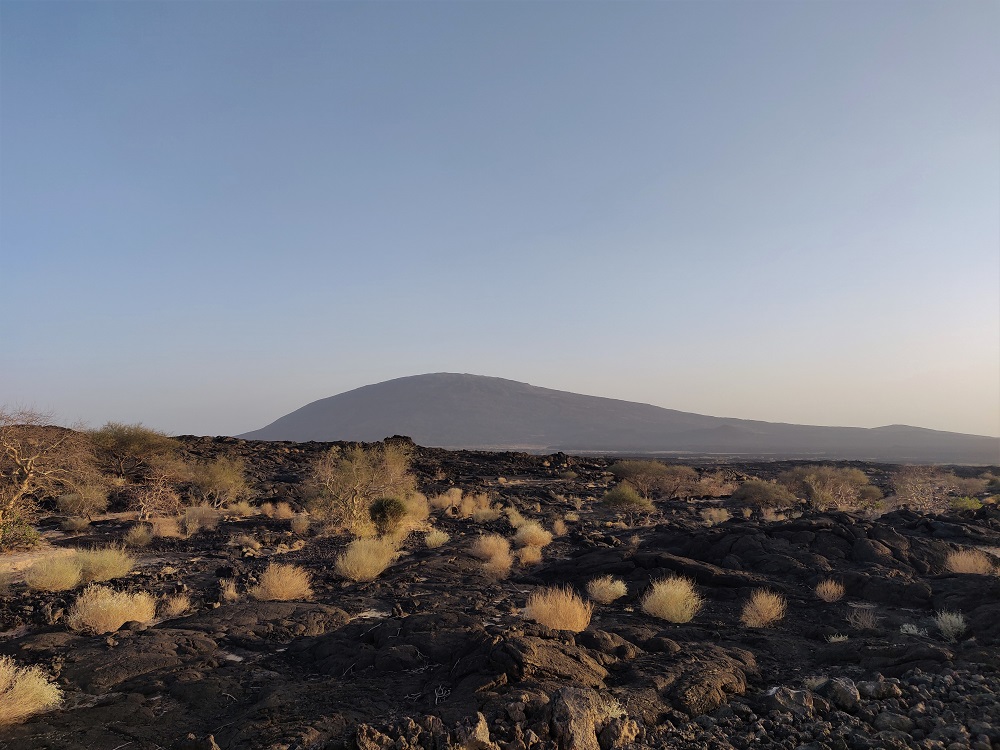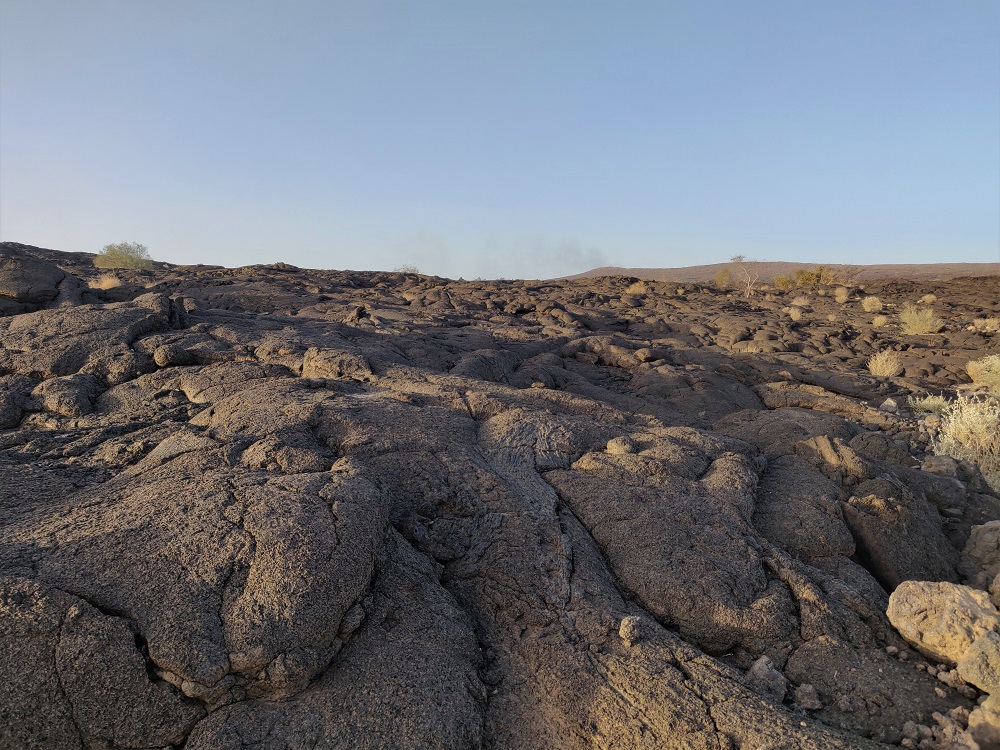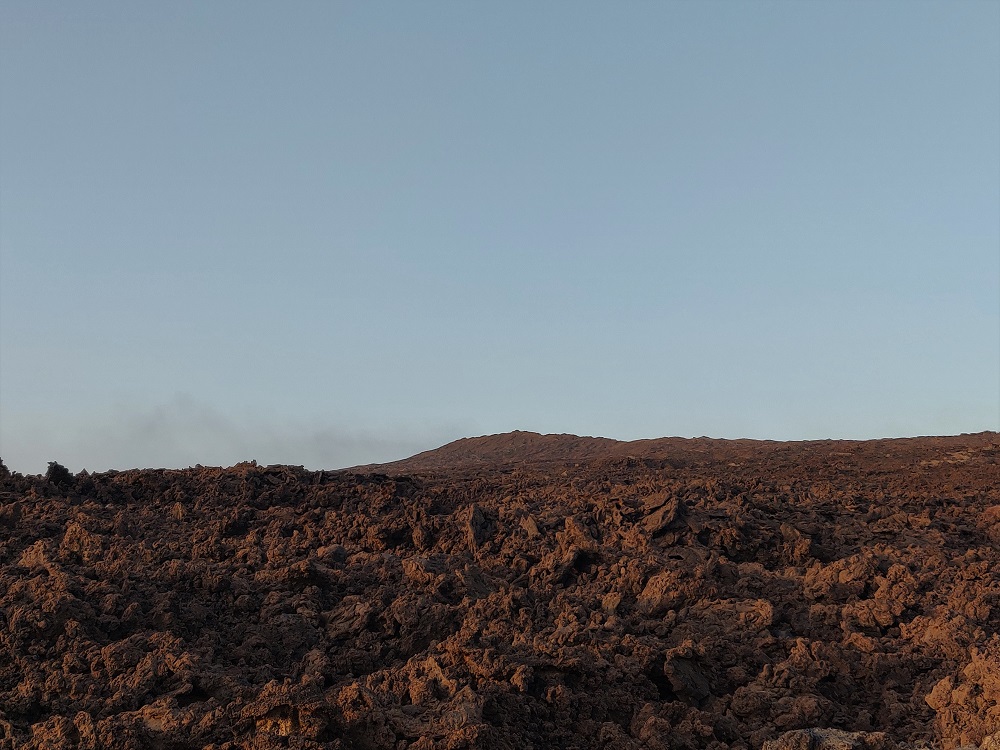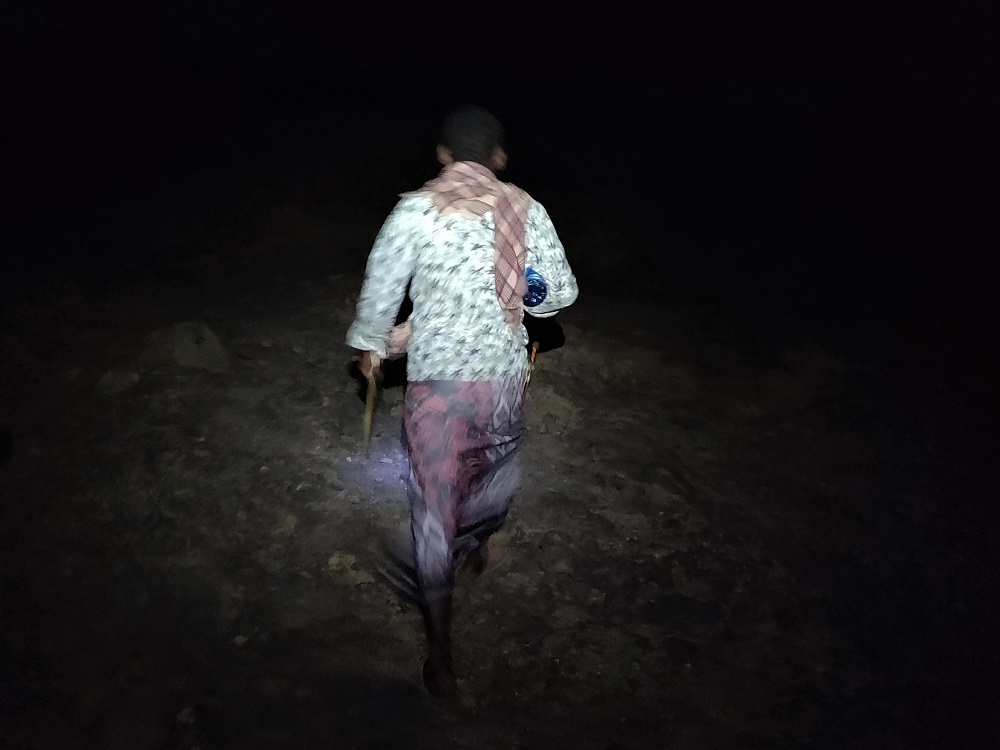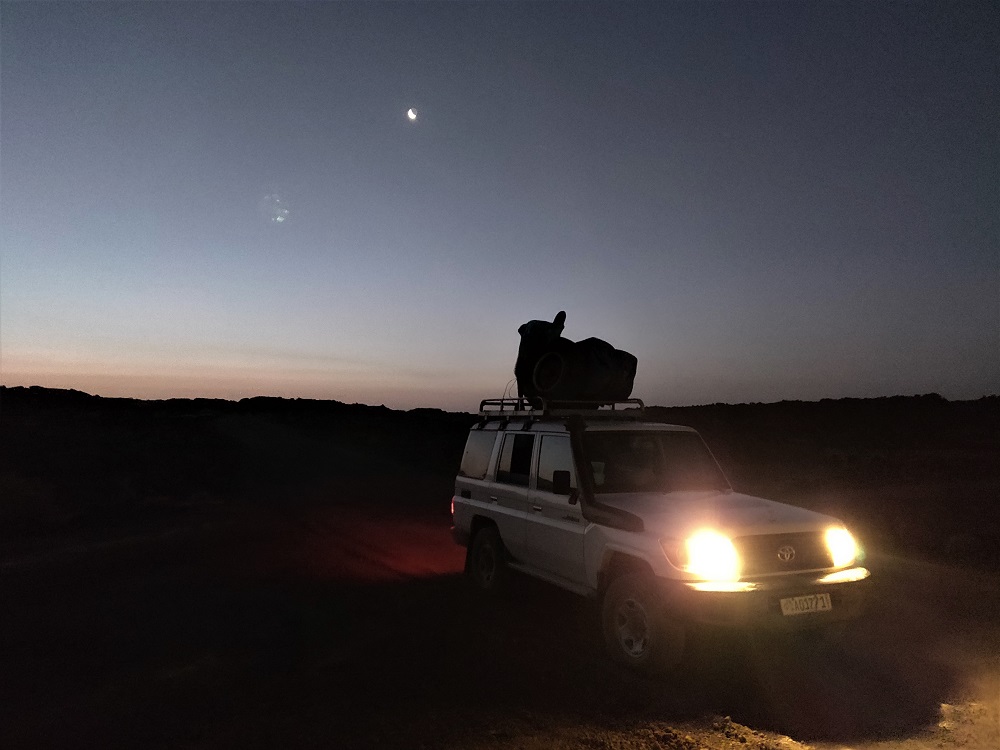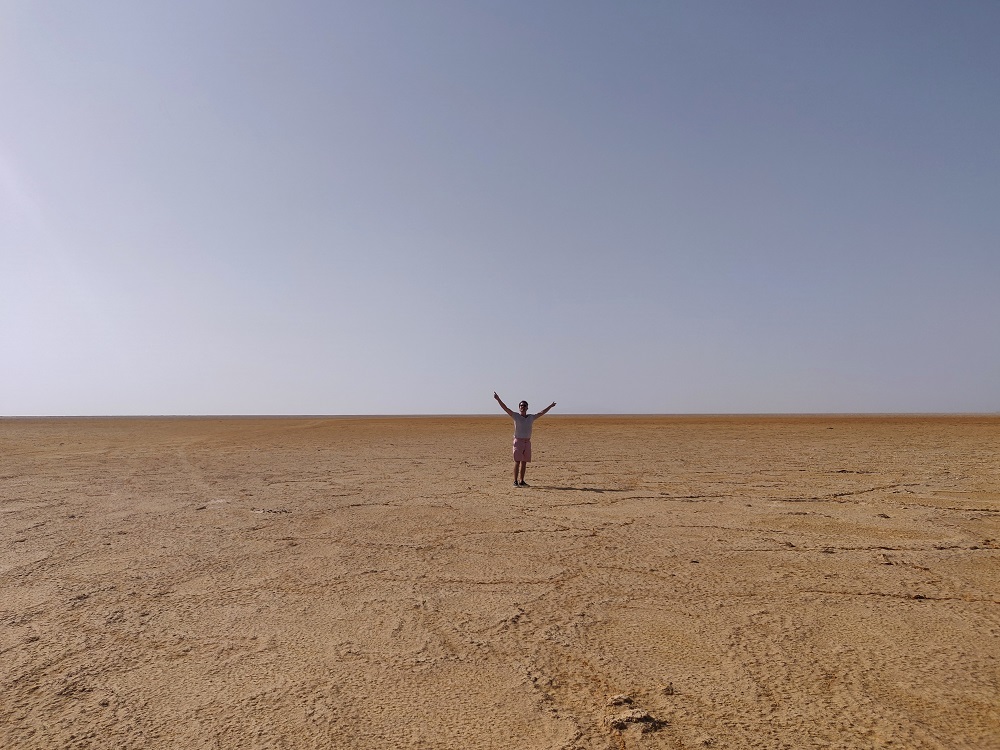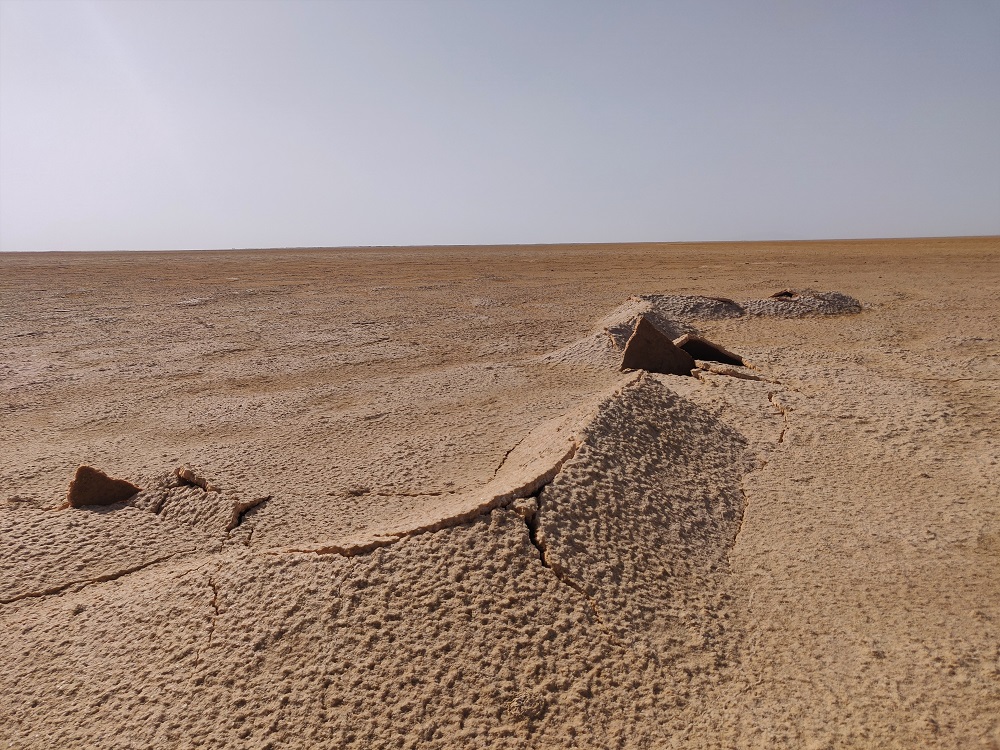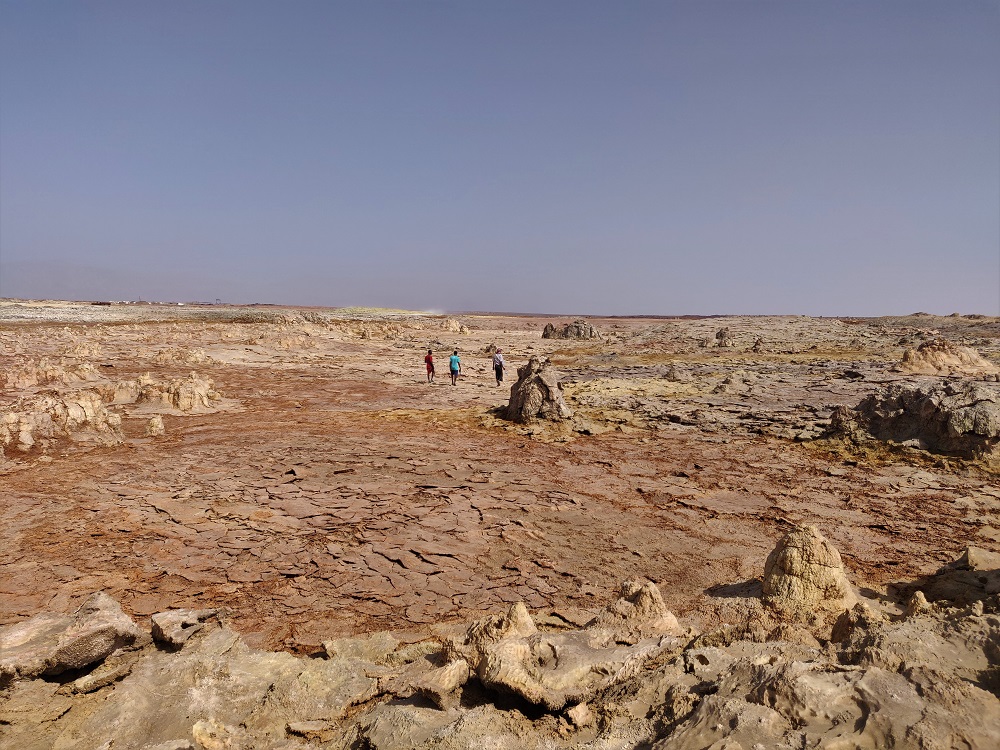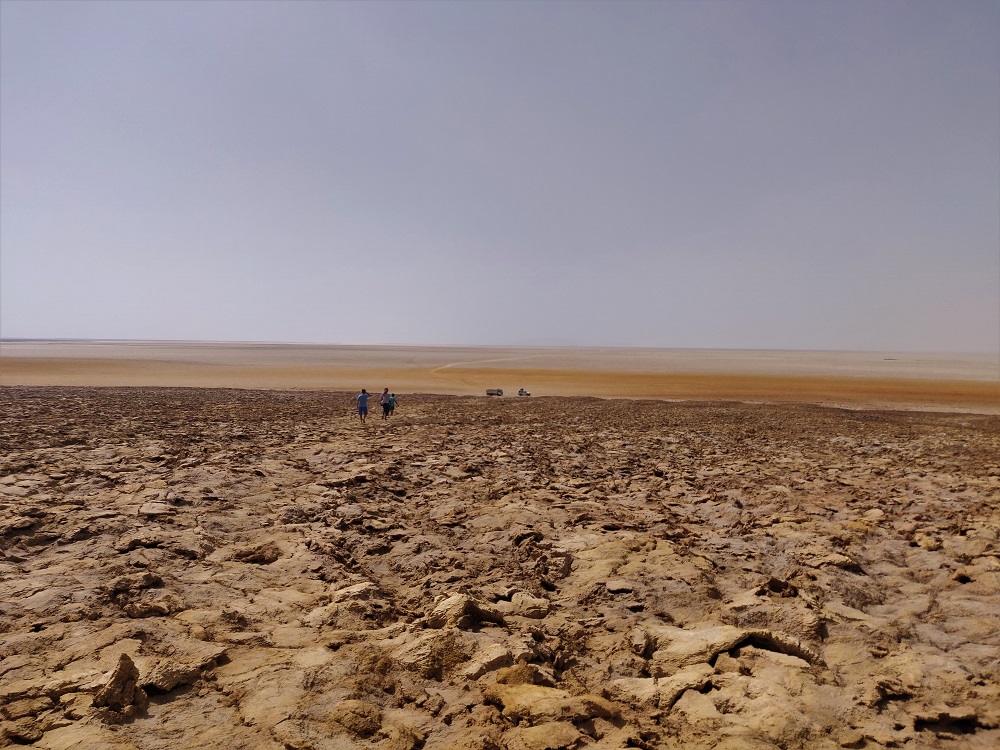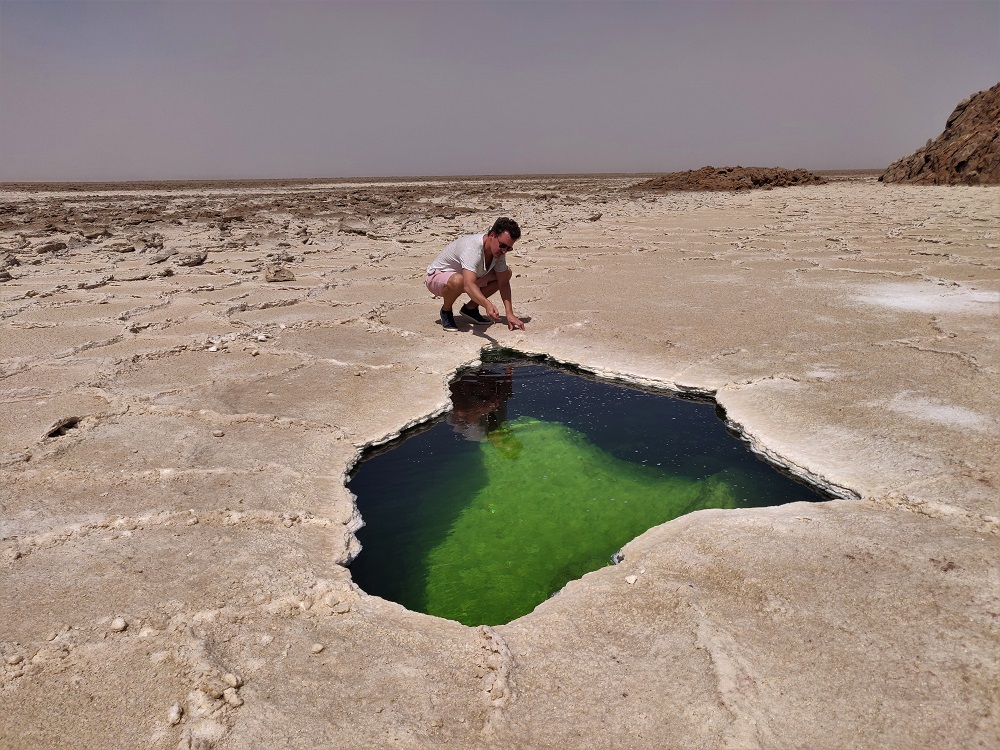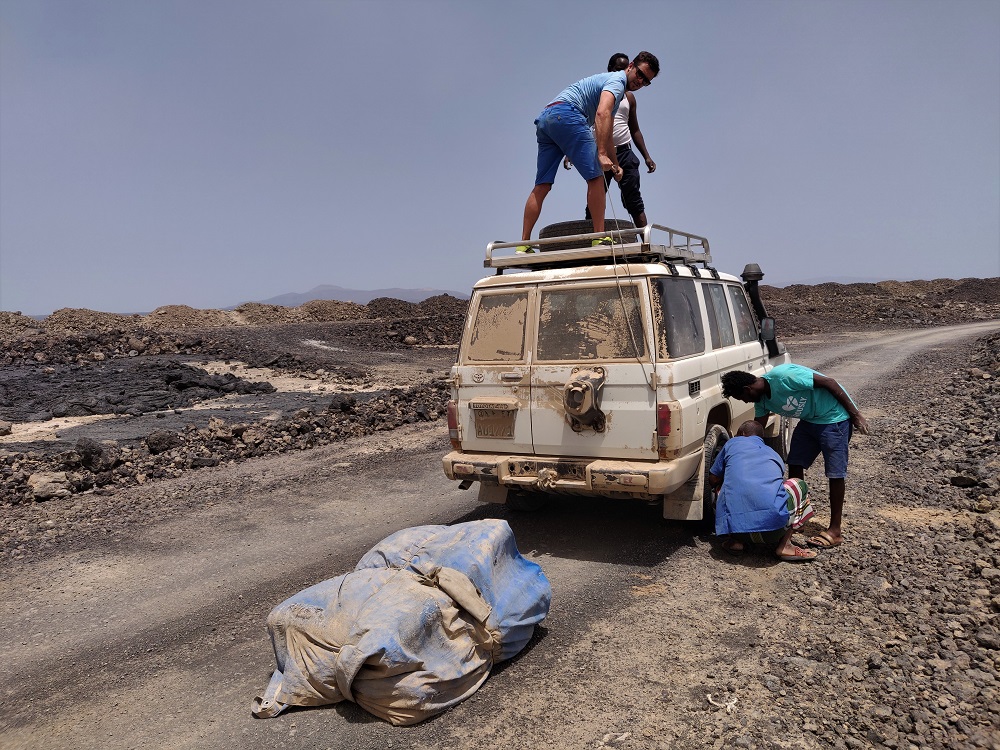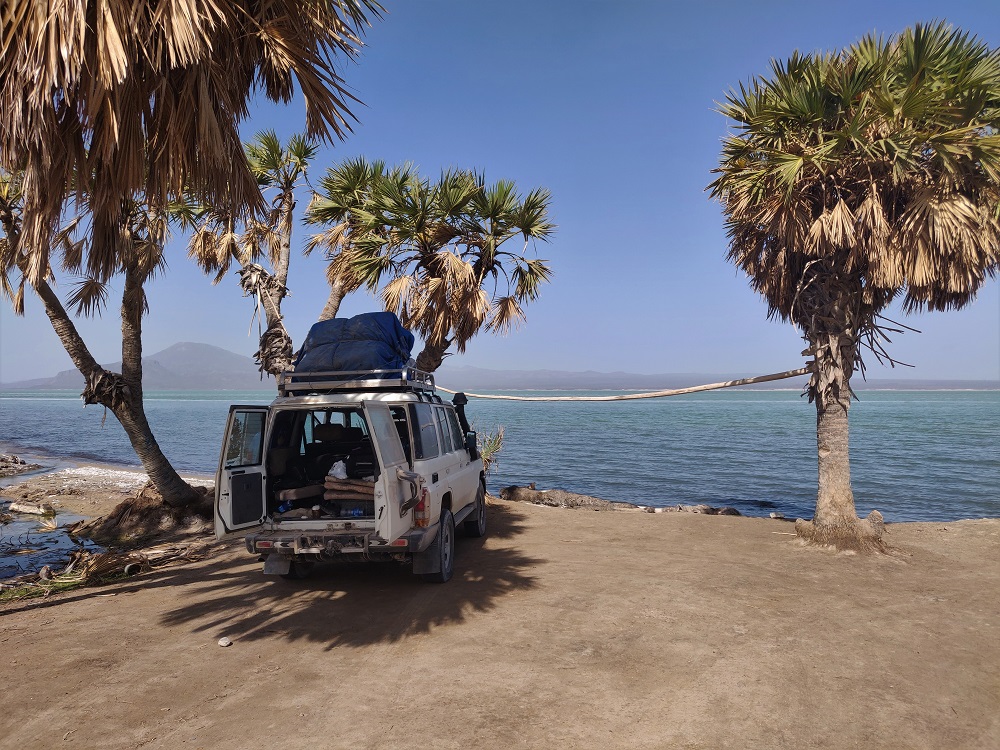How we ended up in a warzone: Danakil Ethiopia
Reading time: min
Eager to travel, while nearing the end of Corona Pandemic? Well, there are countries that are open (or never really closed). One of these countries – which only requires a PCR test at the time of writing – is Ethiopia! And during this post, we explore the Danakil depression!..
Let me start with stating that currently, Corona is likely one of the least of Ethiopia’s concerns (as we will get back to later), given the various ongoing conflicts… So do your homework carefully before travelling!… However, when omitting some unstable regions, chances are high that you will not regret your choice! Traversing Ethiopia is an amazing experience, and if you follow the below itinerary and tips & tricks, I am sure you will share my opinion!
Tips for getting around in Ethiopia
Originally we planned to drive ourselves, in hindsight that would not have been a very good idea. It is doable, but you need a lot of time and overcome various hurdles. Hence I would advise against it:
- Firstly, because of the long travel times, it would have been very tiring.
- Secondly, due to the language barrier with the high amount of checkpoints.
- Thirdly, the traffic is crazy, considering the countless camels, goats, cows and donkeys, children crossing the road constantly. Then there are the many car wrecks, clearly a sign of trouble. This combined with the language barrier in case something goes wrong will no doubt provide quite the challenge…
- Fourthly, Ethiopia is the first country I came across that does not accept EU or International, driver’s licenses. Your driver’s license needs to be exchanged for an Ethiopian driver’s license. With all the required bureaucratic hassle involved.
Top Tip: I usually leave everyone to find their own tour guides, however in Ethiopia I think you cannot go wrong with Ethio Travels. I used them for the first leg of our journey. They have offices in the larger towns, a wide range of tours and tour guides and good cars. (Although they could still make some upgrades – more on that later).
Top Tip: I had amazing help via a colleague and his Ethiopian wife. They ensured family support for the second leg of our journey and provide me with a local SIM card. I recommend buying one! As many hotels/guides/drivers do not have data (e.g. no WhatsApp) and/or seem more used to calling.
Day 0 – Arrival in Addis Ababa
We arrived in the afternoon in Addis Ababa. Depending on your flight timings, you could opt to directly fly (or drive onwards). Addis does not have too many places of interest, and when taking roads less travelled, it is always better to keep a buffer at the end of your trip. Hence, the earlier you can travel onwards the better in my opinion.
Addis has a nice vibe, especially compared to other large African cities! People are nice and I felt no sign of tension in the wider country (e.g. army presence, etc.). Of course, you have the usual chaotic streets and traffic jams, but nothing ‘over the top’! I am highlighting the key sights of Addis in this Ethiopia post.
Top Tip: in case you plan a large round trip like us and/or you have less time, you could directly fly to your next destination. In our case Semera, or when travelling clock-wise, Bahir Dar. That may save a lot of time on the road (and when booking a connecting flight you would be at the airport already anyway).
Day 1 – Drive to Semera
This is a full day of driving to Semera in the North East, covering a large section of our road trip. Which is the base to explore the Danakil Depression.
Roads are actually good and one particular section is excellent! (A 3-lane Chinese toll road section covering the approx. first 100km, where we could easily cruise at 140-160km/h). The road has not many potholes, however, the majority is a 1-lane road, which requires a lot of overtaking and delays on the remaining 400+ km 2 lane road.
Do not drive for the sake of ‘national parks’ of East Ethiopia
When looking at the map, I was excited as we would be driving through the various national parks. Seeing the country was one of our key reasons for driving as opposed to flying during our Ethiopian road trip. However, do not expect to encounter any form of wildlife here. The parks are not ‘real’ national parks and you will not see much difference compared to other stretches of the Ethiopian road network. Apart from some monkeys and the occasional herded camels, goats or cows, you will not see much. Believe me, you will see many more of these on other stretches of Ethiopian road! Hence, if you are willing to fly, see my top tip above (or my experience below – and do your research!) it may save you travel time.
How we suddenly found ourselves in a War-Zone
As mentioned, we did not see any wildlife, only the occasional herders when driving Northward from Addis. However, the further we drove the more we saw people carrying machine guns. According to our guide, this happened more often in times of tribal land disputes. Little did we know that this was a bit more serious than some angry farmers…
Driving into a war-struck Ethiopian ghost-town
A bit further down the road (about 1.5 hours to Semera) we drove into a ‘ghost-town’ (Kalle Ali, as per my later google search). This time no goats, donkeys or people on the road. A few buildings were burnt down on the lefthand side… This was strange! Suddenly we saw many people waiving and our driver made an abrupt U-turn to hide behind a few parked trucks. After some tense conversations, a metal gate was quickly opened and we drove into a restaurant courtyard.
“What is happening?” said my awaking travel buddy Arnoud. Well, that was obvious when opening our doors, as the loud sound of machine guns was blazing all around the village. Apparently, we found ourselves in the middle of a (new) conflict between Afar (Ethiopian tribe) and Somali forces. The villagers in the courtyard were caught in the middle and were hiding and waiting it out… And so were we… The guide ordered a few beers for us and there we sat, listening to the gunfire and the occasional grenade exploding around us… So surreal that it was almost funny… if it was not so sad…
Looks like we had to stay the night
The villagers seemed quite relaxed, which comforted us. However, they were obviously sad that the Ethiopian army did not help them in these situations. Apparently, this happened a few times over the last weeks already)
It soon became clear that the guide thought it was best to stay the night in the courtyard. Not entirely in line with our plan (especially not Arnoud’s). Luckily the gunfire did seem to slowly move away from the village, so I already had my hopes up… Then we heard a low noise through the streets… The Ethiopian Federal Army had arrived, with tanks!… That surely would improve the situation!?! Shortly after that, we heard heavier gunfire and then more and longer quiet moments followed…
A sudden banging on the gate
Then suddenly there was a loud banging on the metal gate! Followed by shouting and continuous banging… The women and children fled inside and a few strong (thus far relaxed-looking) Ethiopian men jumped up and fled into a side building… What was this!?! Where should we go?… We were calmed to sit where we were, which did not really seem the best idea given the sudden excitement, but we stayed put regardless… Then an elder man opened the gate and 3 men with machine guns walked into the courtyard… That could have been trouble, but luckily, these were local villagers who were collecting a rickshaw to carry valuable belongings and ensured us that it was safe for us… Those were the scariest looking bearers of good news I’ve met thus far…
Not staying the night after all…
We started pushing our guide to head for the bridge (approx. 1km away) given that it was likely better to go there than to sit and wait here… First, he was reluctant, but then we heard the trucks starting and driving off, so we jumped into the car, got on the street, where coincidentally we followed an Ethiopia federal army truck. Everywhere were people carrying precious belongings (goats, TVs, rickshaws, etc.) we zig-zagged through the chaos, and off we were speeding with 160km/h, without lights to the state border and then onwards to our hotel in Semera…
What a crazy experience, which happened as quickly as it went… In hindsight we could have just ignored the waving gestures, we would have likely just passed the bridge and would not have known what was happening… and would have arrived in our hotel a few hours earlier… Also consider that the guide drove through this village around 1-2 hours earlier to come to pick us up, and then all was normal…
A crazy unexpected start of our Ethiopian road trip… The next day various international news agencies reported that over 100 people died that day in the clashes.
Day 2 – Danakil depression sleeping at active Erta Ale Volcano
The next morning we were picked up in our hotel in Semera, and via the tourist office and gas station, we drove onwards to our adventure into the Danakil depression; one of the lowest, hottest and most harsh environments on Earth!…
Top Tip: Ask your guide to arrange the tourist office formalities and gas filling before he picks you up at your hotel, as you are merely waiting in the car.
Top Tip: You will be many hours in the car! Check if you can/should bring your own music to play on the long journey and if the car is fitted with a cooler (very nice to have some cold drinks! If not, you may even consider bringing a coolbox or cool bag from home or Addis). In addition, ensure that your guide brings an extra jerrycan of gasoline, so you are a bit less reliant on supply in the Danakil depression itself and you are more flexible.
Getting depressed at Danakil
From the main road heading to Djibouti you turn left just before the border and you keep driving northwards into a desert landscape that quickly turns into a scenery of neverending black hardened lava streams. You soon realize why the Danakil Depression is one of the hardest places to live in the world! The term depression got its name as it is one of the lowest places on earth (more than 100m below sea level), which is the main reason for it to be so hot and dry here… Perhaps the term hints at another thing as well… Imagine living and working here day in day out, it would be only a matter of time to get a mental ‘Danakil Depression’ yourself…
Apart from lava rock, along the road, you will see many goat herders, camels, Bedouin-style tents (similar to Djibouti’s Lake Abhe region). Unfortunately, you will also find many car and truck wrecks. We even arrived a few moments after one car crashed upside down next to the road, our driver even had to rescue the driver of the other car… Luckily everyone was relatively ok!
Surprisingly good road quality
The high volume of crashes may be more to do with overtaking, lack of driving skills and/or lack of car/truck quality, as the roads are much better than you would expect in this harsh area. This is because the Chinese are building one of their many African roads, in their conquest for minerals in this volcanic region. The project is still ongoing and will be finished over the coming years. But the first stretch of 200+ km is finished, once driving onwards to Erta Ale and beyond to Dallol, you will drive offroad/unpaved. However, the new (under construction) road lies next to the unpaved path and a cheeky driver will know how to make use of some fresh stretches of the paved road already!)
Lunch and preparations for the Danakil adventure
After driving through various small settlements, we found a place to eat and afterwards a (better) place to have a beer and some additional food… Do not expect any form of luxury after leaving Semera; no cell phone service, very basic food establishments with goats roaming freely) and all with a hot blow-dryer wind in your face. Definitely, a one-of-a-kind experience guaranteed!…
After our lunch and afternoon ‘relaxation’, we picked up our security (in our case two useless – but therefore funny – police officers) and a local scout. There are rumours of ‘bandits’ in the region, hence the required supposedly required security. However, I am very unsure of their actual benefit and it seems more a way to keep the local population happy with driving tourists through ‘their’ territory.
Given it is so hot, you do not want to arrive at the Erta Ale volcano too early, as you will be stuck in the blazing sun. Hence, we arrived at sundown at our camp-site, where after a quick dinner we would make the 30 min walk up to the Erta Ale crater.
Erta Ale
As soon as the sun sets you will follow the guide up to the Erta Ale crater. The walk is fairly easy, but the lava rock is very sharp and pointy, therefore wear good shoes, as I destroyed my sneakers!… When walking into the Erta Ale crater you start walking over ‘fresh’, crispy plates of lava which is so brittle it feels like walking over snow, as it gives away when walking over it….
Erta Ale is one of the few active volcanos in the world where you can see actual lava in its crater year-round! An amazing site, and definitely one of Ethiopia’s key highlights, if not for Africa as a whole!… Despite visiting during a day of ‘lower activity’ we already found this spectacular! Imagine even more activity, I highly recommend including this in your itinerary!
After spending some time at the volcano crater, we slept on matrasses in the open sky with an amazing clear starry night… With the hard wind, it was a bit hard to get the best rest possible, as sometimes it seemed that our sleeping bags (and ourselves) were completely blown away!…
Day 3 – Danakil Depression Amazing Dallol
The next morning we woke up early (at 4.30h) to arrive at Dallol before it would get too hot (and allow for time driving back)… A long and unpaved journey which at some point I doubted if it would be worth it… Upon arrival at a nearby town, we changed scout and security again (this time they were more capable) and we started our journey on the salt plain to an ‘island’ in the vast flatness called Dallol.
From the beige salt flat (different than white in Bolivia) the striking array of colours on the island is amazing! This ‘mountain’ is formed due to all sorts of minerals boiling up from the ground, essentially forming this ‘island’ over the many years…
Hiking up the islands, the colours are getting brighter and more intense with every step from orange, to brown and red, to white, grey, eventually to fluorescent yellow, green and blue. Just astonishing!… During our visit, there was so much activity, with so many hot spots and geysers boiling, bubbling and spraying mineral-rich fumes and liquids… No wonder this is a key place for astrobiologists, to help understand how life might arise on other planets and moons. Very impressive and certainly worth the additional long drive from Erta Ale and back.
The only 2 tourists roaming magical geyser grounds
Dallol is a clear example that mass tourism has not reached Ethiopia (and Africa) yet. Here we were, the only 2 tourists (in days), that were literally walking over and in between these magical boiling geyser grounds. If this was anywhere else (e.g. Iceland) this would have not been possible and the experience would have been completely different! There would have been viewpoints built at a safe distance (with busloads of tourists). So be ‘quick’ and explore Dallol in all tranquillity while you still can! On second thought, perhaps no need to rush too much, I expect you will still have a few years or even decades!
Top Tip: When visiting the Danakil Depression, ensure to include Dallol in your itinerary! It would be a waste and not complete without it! Very impressive and one of the strangest, alien-like place I have visited!
Danakil salt flat explorations
Driving back we did some additional ‘explorations’ of the salt flat itself. We passed various strange rock formations as well as an opening where you can see the water, underneath the salt flat. I did try to find out more on this, but very unsure if there is actual water underneath the entire salt flat! That would be truly amazing as cars and heavy trucks are driving over this! I always thought that salt flats usually are ‘dried’ salty lakes. If anyone knows the answer let me know!
Danakil life: 2 Flat tires in one day
On our way back we had 2 flat tires, luckily we also brought 2 as well… Did I already mention how harsh the Danakil environment is? Crazy!…
Lake Afrera
After making our way back from Dallol, we had (late) lunch and a drink at the settlement next to Lake Afrera. Here, after our dusty experience, we had a ‘refreshing’ dip in the hypersaline Afrera lake and the adjacent brackish hot spring. When swimming in Lake Afrera you feel the floating sensation, similar as my experiences in Lake Assal (in Djibouti) or in the Dead Sea (in Jordan), however, but given the lower salinity, to a far lesser extent…
Originally, as part of our tour, we would have stayed in a very basic ‘hotel’ in the Danakil settlement. But given our high-speed travel style and the many kilometres and travel time ahead of us, we decided to already drive back to Semera and stay in a ‘nice’ hotel (apart from the cockroach infestation). We reached our hotel in the evening, after driving around 14 hours (of which many hours off-road). This would buy us quite some time for the next day when we would continue our road trip to the cultural highlight of Ethiopia… The rock-hewn churches of Lalibela…
An amazing first leg of this Ghost Around the Globe journey through Ethiopia’s Danakil region! Follow the link to read all about my experiences and tips & tricks when exploring the cultural highlights of Ethiopia; Lalibela, Gondar and Bahir Dar… Follow the link to continue our amazing journey!…



